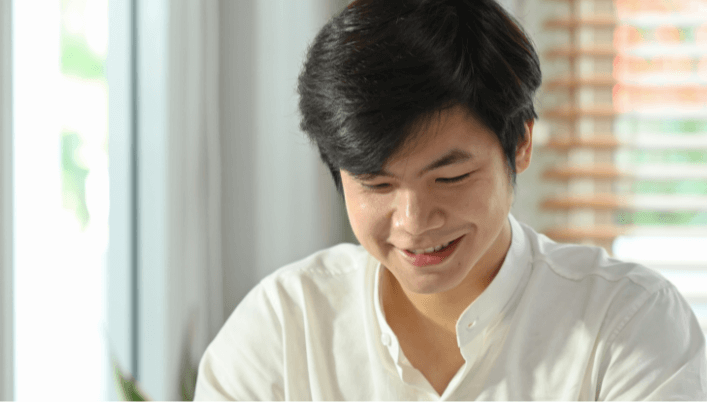Introduction CPF Withdrawal Limit

Understanding the CPF withdrawal limit in Singapore
The CPF withdrawal limit is determined based on several factors, including the amount of CPF savings individuals have accumulated, their withdrawal rules, and the purpose for which they wish to withdraw their CPF funds.
One of the key considerations is the Basic Retirement Sum (BRS), which is the amount set aside in a retirement account by CPF members when they reach 55 years of age.
For individuals who have yet to meet the BRS, they can withdraw up to the BRS and the remaining savings will be set aside in their retirement account.
On the other hand, for those who have met the BRS, they can choose to withdraw the excess savings above the BRS or leave the funds in their CPF account to continue earning interest.
Another important aspect of the CPF withdrawal limit is the CPF Housing Withdrawal Limits.
These limits determine the amount that CPF members can withdraw from their CPF accounts to finance their property purchases.
The withdrawal limit is dependent on the remaining lease of the property, with higher limits for properties with longer lease periods.
Overview of CPF withdrawal and withdrawal limits
The Central Provident Fund (CPF) is a comprehensive social security savings scheme in Singapore that enables Singaporeans to save for their retirement, healthcare, and housing needs.
As individuals approach their retirement age, they can start withdrawing their CPF savings to support their post-retirement life.
However, there are certain withdrawal limits imposed by the CPF Board to ensure that individuals have sufficient savings for their retirement.
These limits are set to strike a balance between allowing individuals to enjoy their hard-earned savings and ensuring that they have a secure financial future.
Key Features of CPF Withdrawal Limit
One of the key features of the CPF withdrawal limit is its flexibility.
CPF members can choose to withdraw their CPF funds in various ways, including monthly instalments, lump-sum withdrawals, or a combination of both.
This gives individuals the freedom to tailor their withdrawal strategy based on their financial needs and preferences.
Additionally, CPF members who have used their CPF savings to finance their property purchases can make additional withdrawals from their CPF accounts.
This additional withdrawal is subject to certain conditions, such as the sale of the property or the repayment of any outstanding home loan.
Furthermore, CPF members who require funds for medical purposes, such as renal dialysis treatment, can apply for a withdrawal under paragraph 63 or 63B of the CPF Act.
These withdrawals are granted on a case-by-case basis, taking into consideration the individual’s specific medical needs.
The CPF withdrawal limit in Singapore plays a crucial role in ensuring that individuals have sufficient savings for their retirement while still allowing them to enjoy the fruits of their labor.
By understanding the withdrawal limits and making informed decisions, individuals can effectively manage their CPF savings and secure a comfortable retirement.
Key Takeaways
- CPF Withdrawal Limits: Understand the CPF withdrawal limits, which are determined by factors such as CPF savings, withdrawal rules, and the Basic Retirement Sum (BRS).
- Flexibility in Withdrawal: The CPF withdrawal system offers flexibility, allowing members to choose monthly instalments, lump-sum withdrawals, or a combination based on financial needs.
- Housing Withdrawal Limits: Consider CPF Housing Withdrawal Limits when using CPF for property purchases; these limits depend on the property’s valuation and remaining lease.
- Remaining Lease Impact: The remaining lease significantly affects CPF withdrawal limits for property purchases, influencing the amount of CPF funds available.
- CPF OA for Home Loan: Utilize CPF Ordinary Account (OA) funds for home loan repayment, understanding the impact on retirement savings and eligibility for schemes.
- Benefits of CPF for Home Loan: Using CPF funds for home loans preserves cash, earns risk-free interest, but careful consideration is needed to balance retirement savings.
- Maximizing CPF Withdrawal Strategies: Strategies include understanding property-dependent withdrawal limits, using CPF OA savings, leveraging existing properties, and considering CPF housing grants.
- Timing Considerations: The timing of property purchase affects CPF withdrawal limits; as the remaining lease decreases, withdrawal limits may be reduced.
- Plan for Retirement: Strike a balance between property financing and retirement savings; proper financial planning ensures long-term financial security.
- Monthly Payout Impact: Using CPF savings for property purchase may impact future monthly payouts during retirement; consider the long-term implications on retirement income.
CPF Housing

Using CPF to finance your property purchase in Singapore
Are you considering using your CPF savings to finance your property purchase in Singapore? If so, there are a few key factors to keep in mind.
The valuation price of the property, your CPF monies, and the type of loan you choose can all impact the amount of CPF you can use for your purchase.
First, let’s talk about the valuation price of the property.
The CPF Board has set certain limits on the amount of CPF that can be used based on the property’s valuation.
The higher the valuation, the more CPF you can use towards your purchase.
Next, let’s discuss your CPF monies.
You can use your CPF Ordinary Account (OA) savings to finance your property.
The amount you can use will depend on the time of purchase and the purchase price of the property.
It’s important to note that CPF OA savings can only be used for residential properties.
When it comes to financing your property, you have the option of using CPF, bank loans, or a combination of both.
If you opt for a bank loan, you can choose to use your CPF savings to offset the loan amount, reducing the cash portion required.
This can help lighten the financial burden of your property purchase.
It’s important to consider the type of loan you choose.
If you decide to take a loan in cash, the CPF Housing Withdrawal Limits will not affect you.
However, if you choose to use your CPF savings to pledge a portion of the property as collateral, you will need to comply with the withdrawal limits set by the CPF Board.
Considerations for CPF housing withdrawals
If you have purchased a Housing and Development Board (HDB) flat using your CPF savings, there are a few considerations to keep in mind when it comes to CPF housing withdrawals.
Firstly, the valuation of the property at the time of purchase is important.
The CPF Board has set limits on the amount of CPF that can be used based on the valuation.
This means that the higher the valuation, the more CPF can be used.
Secondly, consider how much CPF OA savings you have at the time of purchase.
The amount you can use from your CPF OA will depend on the purchase price of the property.
It’s important to note that CPF OA savings can only be used for the initial downpayment and monthly mortgage payments.
If you have an outstanding housing loan when you are considering a resale property, there are additional considerations for CPF housing withdrawals.
The CPF Board has specific rules for the application of withdrawal, and the amount available for withdrawal will depend on factors such as the remaining lease of the property and the outstanding housing loan amount.
Understanding how to utilize your CPF savings for your property purchase in Singapore is crucial.
Take into consideration factors such as the valuation price of the property, your CPF monies, and the type of loan you choose.
By making informed decisions and following the guidelines set by the CPF Board, you can successfully finance your property purchase while managing your CPF savings effectively.
Remaining Lease and CPF

Implications of remaining lease on CPF withdrawal
When it comes to CPF withdrawal for property purchases in Singapore, the remaining lease of the property plays a significant role.
The CPF Board has set certain rules and limits based on the remaining lease, which can affect how much CPF can be used for financing your property.
Using CPF savings to finance your property purchase is a common practice in Singapore.
However, the remaining lease of the property determines the extent to which you can withdraw CPF funds for this purpose.
The CPF Board calculates the amount of CPF that can be used based on factors such as the remaining lease, using CPF savings, and the price or valuation of the property.
For example, if the remaining lease is less than 60 years, there are restrictions on the use of CPF for the purchase.
The amount of CPF that can be used is determined by the CPF withdrawal limit, which takes into account the remaining lease, the purchase price or valuation of the property, and your CPF monies.
It’s important to consider the implications of the remaining lease on your CPF withdrawal limit, especially if you are using CPF savings as part of your retirement savings.
As the remaining lease decreases, it may impact the amount of CPF funds you can withdraw, potentially affecting your retirement plans.
Additionally, if you are considering purchasing a resale flat with an outstanding home loan, the remaining lease becomes even more crucial.
The CPF Board has specific rules for the application of withdrawal in such cases.
The amount available for withdrawal will depend on factors such as the remaining lease, the outstanding housing loan amount, and other considerations set by the CPF Board.
Understanding the implications of the remaining lease on CPF withdrawal is essential as it can affect various aspects of your life.
Whether it’s for retirement savings, financing your property purchase, or even for medical treatments, being aware of the rules and limits set by the CPF Board can help you plan effectively.
https://www.youtube.com/watch?v=ENTUZDrJfNY
How remaining lease affects the CPF withdrawal limit
The remaining lease of a property can significantly impact the CPF withdrawal limit when it comes to property purchases in Singapore.
Understanding how the remaining lease affects the CPF withdrawal limit is crucial for making informed decisions and managing your CPF funds effectively.
The CPF withdrawal limit is calculated based on various factors, such as the purchase price or valuation of the property, the amount of CPF savings you have, and, importantly, the remaining lease.
As the remaining lease decreases, the CPF withdrawal limit may be affected, potentially limiting the amount of CPF funds you can use for your property purchase.
For example, if the remaining lease of a property is less than 60 years, the CPF withdrawal limit will be affected.
The CPF Board has set specific rules for such cases to ensure that CPF savings are preserved for retirement purposes.
The limit takes into consideration the remaining lease, the purchase price, and your CPF monies.
It’s important to note that the CPF withdrawal limit also applies to other situations, such as the sale of a property or the application for withdrawal for medical treatments.
Understanding how the remaining lease affects these scenarios can help you plan for various life events effectively.
For instance, if you require medical treatments like renal dialysis or chronic illness treatment, the remaining lease of your property can affect the amount of CPF funds you can withdraw for these treatments.
Pre-delivery medical treatments for expectant mothers are also subject to the CPF withdrawal limit, considering factors such as the remaining lease and the treatment cycle.
The remaining lease of a property has a significant impact on the CPF withdrawal limit for property purchases in Singapore.
Understanding how the remaining lease affects the CPF withdrawal limit is crucial for making informed decisions about using CPF funds for your property purchase, managing your retirement savings effectively, and planning for other life events that may require CPF withdrawal.
By considering the remaining lease in relation to the CPF withdrawal limit, you can navigate the CPF system and make the most of your CPF savings while ensuring financial security and well-being.
Utilizing CPF OA Funds

Using CPF OA monies for home loan repayment
Using CPF OA funds for home loan repayment is a common practice in Singapore.
CPF members can utilize their CPF OA savings to finance their HDB loan or bank loan for the purchase of a property.
The amount that can be withdrawn depends on various factors, including the remaining lease of the property and the outstanding housing loan.
For properties with a remaining lease of less than 60 years, there are certain restrictions on the use of CPF OA funds.
The CPF Board has set specific rules to ensure that CPF savings are preserved for retirement purposes.
The withdrawal limit is calculated based on the remaining lease, the purchase price of the property, and the CPF monies available.
It’s important to consider the remaining lease of the property when utilizing CPF OA funds for home loan repayment.
As the remaining lease decreases, the CPF withdrawal limit may be affected, potentially limiting the amount of CPF funds that can be used for the loan.
It’s advisable to carefully assess the remaining lease and the loan amount before making a decision.
Benefits and considerations of using CPF for home loan
There are several benefits and considerations when using CPF funds for home loan repayment.
One of the benefits is that using CPF funds allows you to preserve your cash savings for other purposes.
By utilizing your CPF OA savings for the loan, you can reduce the amount of cash needed for the down payment or monthly instalments.
This can ease the financial burden and provide more flexibility in managing your expenses.
Another benefit is that CPF OA savings earn risk-free interest that is higher than most conventional savings accounts.
By using CPF funds to repay your housing loan, you can effectively earn this interest on the amount used, which can help offset the cost of the loan over time.
However, there are considerations to keep in mind when using CPF funds for home loan repayment.
It’s important to remember that CPF OA savings are meant for retirement, and any amounts used for housing will reduce the savings available for retirement.
It’s essential to strike a balance between utilizing CPF funds for the loan and ensuring sufficient savings for retirement.
Additionally, using CPF funds for the loan may affect your eligibility for certain schemes or grants.
For example, if you plan to sell your property in the future, the sale proceeds will be used to refund the CPF funds used, including the accrued interest.
This may impact your finances and future plans.
Utilizing CPF OA funds for home loan repayment can be a beneficial option for CPF members in Singapore.
It allows them to reduce their cash outlay and take advantage of the risk-free interest earned on CPF savings.
However, it’s important to consider the remaining lease of the property and the impact on retirement savings.
By understanding the benefits and considerations, individuals can make informed decisions about using CPF funds to finance their property purchase.
Maximizing CPF Withdrawal

Strategies to Maximize CPF Withdrawal for Property Purchase
When it comes to financing your property purchase in Singapore, utilizing your CPF savings can be a smart move.
To maximize your CPF withdrawal, consider the following strategies:
- Property Dependent Withdrawal Limit: The CPF Board has set specific rules regarding the withdrawal limit based on the remaining lease of the property and the purchase price. Understanding these rules is crucial in determining the maximum amount you can withdraw.
- Utilize CPF OA Savings: Your CPF Ordinary Account (OA) is the main source for financing your property. By using your CPF OA savings, you can reduce the cash needed for the down payment or monthly instalments, allowing for greater financial flexibility.
- Leverage Existing Property: If you already own a property and are considering purchasing another, you can use your CPF savings to finance both properties. However, the withdrawal limit will be subject to certain conditions and restrictions.
- Consider CPF Housing Grants: If you are eligible for CPF Housing Grants, these grants can further boost your CPF savings for your property purchase. Be sure to check the eligibility criteria and requirements for each grant.
- Timing of Purchase: The timing of your property purchase can affect your CPF withdrawal limit. As the remaining lease of a property decreases, the CPF withdrawal limit may be reduced. It is important to consider the remaining lease and its impact on the CPF funds you can utilize.
- Monthly Limit: CPF offers a monthly withdrawal limit for housing loan repayments. Understanding this limit is important to properly plan your monthly payments and ensure that you can comfortably finance your property.
- Consider the Actual Loan Amount: The actual loan amount you take from the bank or HDB can affect your CPF withdrawal. It is important to calculate the exact loan amount needed to avoid unnecessary depletion of your CPF savings.
- Purchase Price and Outstanding Housing Loan: The purchase price of your property and the outstanding housing loan will also impact your CPF withdrawal limit. Assessing these factors will help you determine the most effective way to utilize your CPF savings.
- Plan for Life and Retirement: It is crucial to strike a balance between utilizing CPF funds for your property purchase and ensuring sufficient savings for retirement. Proper financial planning and understanding the long-term impact on your CPF savings are essential.
- Consider Monthly Payouts: If you choose to use your CPF savings for your property purchase, it may affect your future monthly payouts during retirement. Take into account the impact on your retirement income and plan accordingly.
https://www.youtube.com/watch?app=desktop&v=ENTUZDrJfNY
Importance of Proper Financial Planning with CPF
Proper financial planning with CPF is vital to ensure that you make the most of your savings and secure a comfortable future.
When it comes to property purchases, it is essential to consider your long-term goals and the impact on your CPF savings.
Here are some key reasons why proper financial planning with CPF is important:
- Retirement Savings: CPF savings are primarily meant for retirement. It is crucial to balance your property purchase with the need to preserve sufficient funds for your retirement years.
- Financial Stability: By utilizing your CPF savings wisely, you can create a stable financial foundation for yourself and your family. This includes ensuring sufficient funds for your property purchase while maintaining a healthy retirement nest egg.
- Future Flexibility: Proper financial planning allows for future flexibility and the ability to handle any unforeseen circumstances or expenses that may arise. It ensures that you are not overly reliant on your CPF savings for immediate needs, thereby safeguarding your long-term financial security.
- Property Investment: For those considering property investment, proper financial planning can help determine the most optimal use of CPF savings to maximize returns and minimize risks.
- Peace of Mind: By having a well-thought-out financial plan, you can have peace of mind knowing that you are making informed decisions and securing your financial future.
Maximizing CPF withdrawal for your property purchase in Singapore requires careful consideration of various factors, including the remaining lease, purchase price, and outstanding housing loan.
By formulating effective strategies and engaging in proper financial planning, you can make the most of your CPF savings while ensuring a secure and comfortable future.
Conclusion
In conclusion, understanding the CPF withdrawal limit in Singapore is crucial for individuals planning for their retirement and financial future.
The CPF system provides a framework for individuals to save and accumulate funds over their working years, which can later be utilized in various ways, including purchasing a property.
Understanding the CPF Withdrawal Limit in Singapore
The CPF withdrawal limit is the maximum amount of CPF savings that individuals can withdraw at different stages of their lives.
The limit varies according to the individual’s age, the type of account, and the purpose of withdrawal.
It is important to note that the CPF withdrawal limit for the purchase of a property depends on several factors.
When using CPF savings for property purchase, the amount that can be withdrawn is capped at the lower of the purchase price or the valuation price.
Individuals can withdraw up to 20% of their CPF savings in their Ordinary Account (OA) and 100% of their savings in the Special Account (SA) and Retirement Account (RA).
However, the maximum withdrawal allowed is subject to the prevailing CPF withdrawal limits and the individual’s age.
Factors to Consider for Maximizing CPF Savings
To maximize CPF savings, individuals should consider several factors.
Firstly, it is important to set aside the applicable amounts in the retirement account and CPF savings to ensure a steady and secure financial future.
This includes maintaining the Minimum Sum Scheme and setting aside sufficient amounts in the OA and SA.
Additionally, individuals should consider the age at which they would like to withdraw their retirement account savings.
The unconditional withdrawal limit for CPF savings is set at age 55.
However, individuals can choose to defer the withdrawal to age 65, which allows for a higher withdrawal amount.
Furthermore, individuals should consider their property purchase plans and how it fits into their overall CPF savings strategy.
The amount that can be used to purchase a property depends on the CPF withdrawal limits, the individual’s age, and the property type.
The CPF savings that can be used for property purchase is capped at a certain percentage of the lower of the purchase price or the valuation price.
In summary, understanding the CPF withdrawal limit in Singapore is crucial for individuals planning their retirement and property purchase.
By considering the factors mentioned above and taking a proactive approach towards CPF savings, individuals can maximize their savings and secure a comfortable financial
Frequently Asked Questions
What is CPF withdrawal limit?
The CPF withdrawal limit refers to the maximum amount of money that you can withdraw from your CPF (Central Provident Fund) account.
What is the full retirement sum?
The full retirement sum is the amount of money you need to have in your CPF account to enjoy a monthly payout during your retirement.
How many months of savings do I need in my CPF account to make a withdrawal?
You need to have at least the full retirement sum or the basic retirement sum in your CPF account to make a withdrawal.
Can I use my CPF savings to pay for cancer drug treatment?
Yes, you can use your CPF savings to pay for cancer drug treatment.
Can I use my CPF savings to pay for hospital bills?
Yes, you can use your CPF savings to pay for hospital bills.
What is CPF LIFE?
CPF LIFE is a retirement plan that provides Singaporeans with a monthly payout for as long as they live.
Is there a connection between CPF withdrawal limit and vaccinations?
There is no direct connection between the CPF withdrawal limit and vaccinations.
Can I use my CPF savings to pay for medical treatments in a clinic?
Yes, you can use your CPF savings to pay for medical treatments in a clinic.
Can I withdraw my CPF savings if I have a pre-existing medical condition?
Yes, you can still withdraw your CPF savings even if you have a pre-existing medical condition.
What is a negative sale in relation to CPF withdrawal limit?
A negative sale refers to a situation where the sale price of your property is lower than the outstanding balance of your CPF housing loan.












